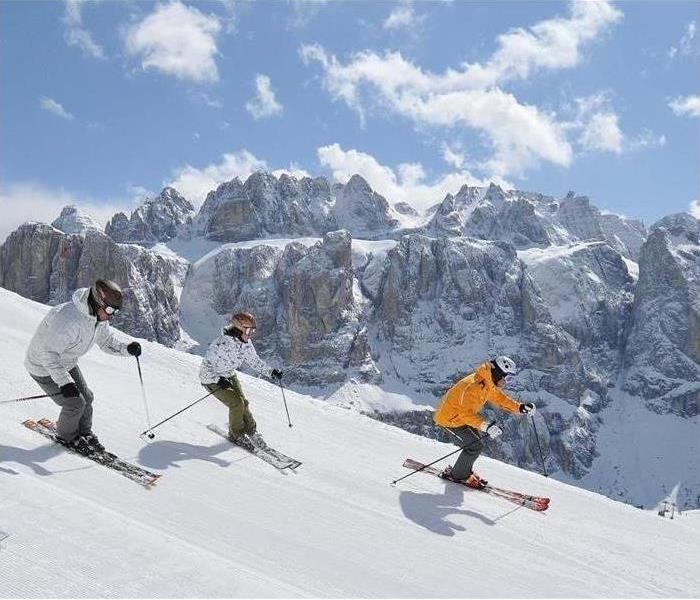Safety Tips for Winter Activities
3/13/2017 (Permalink)
Before heading outside, brush up on these safety tips for the slopes, rink, and more.
Dressing the Part
Staying warm is important for all winter activities. Protect yourself from hypothermia by wearing polypropylene undergarments — which absorb sweat but also retain heat — and layers of water- and wind-resistant clothing. And don't forget the essentials: hats, gloves or mittens, wool socks, and waterproof boots.
Hitting the Slopes
These safety tips can help reduce your chances of injury when you're downhill skiing or snowboarding:
- Take lessons on how to stop, slow down and turn.
- Never ski or snowboard alone.
- Always wear a certified helmet with wraparound goggles.
- Secure loose straps or clothing.
- Identify the appropriate trails for your skill level.
- Check your equipment before and after each run.
Skating Outdoors
Keep these safety guidelines in mind when ice-skating or playing hockey outside:
- Stick to ice at least 6 inches thick and free of ice fishingholes and other debris.
- Avoid ice that has formed over running water, such as a river.
- Always wear a helmet: Hockey helmets offer the best protection.
- Wear proper hockey equipment, including pads and gloves.
- Learn how to properly fall on ice.
Snowmobile Cruising
Inexperience and poor judgment are both leading causes of snowmobile crashes. Learn how to ride safely:
- If you are a novice, consider taking a snowmobile or snow machine safety training course before your first outing.
- Wear a helmet that meets the current Department of Transportation certification standards.
- Wear appropriate cold weather gear, such as a snowmobile suit, snow bib, jackets, and gloves, to cut the wind, repel water and allow ventilation.
- Always go snowmobiling in groups and notify someone at home where the group is headed and the expected return time.
- Always check the weather conditions before departing.
- If traveling in mountainous terrain, check for "Avalanche Conditions."
- Know the area where you're riding, if possible. There may be hazards, such as washouts (melted snow, flowing water or erosion impacting the trail, road or field), fences and drop-offs in unfamiliar areas.
- Before departing, check your machine's fuel and fluid levels to make sure they are sufficient for the trip. You should also check the machine's overall condition and operation.
- Never drive too fast for your comfort level, and keep speeds below 40 miles per hour at night.
- Stay on designated trails.
- Avoid driving on ice, but if it's the only option, wear a lifejacket.
- Always ride sober, which includes avoiding prescription medications that may affect how you ride.
- Be cautious when crossing roadways.
- Never approach wildlife.
- Carry a first-aid kit, water and non-perishable food in case of a mishap on the trail.
Source: https://learningcenter.statefarm.com/safety-2/family-1/safety-tips-for-winter-activities/index.html?cmpid=enews-dec15#sthash.e6T1EjVt.dpuf






 24/7 Emergency Service
24/7 Emergency Service